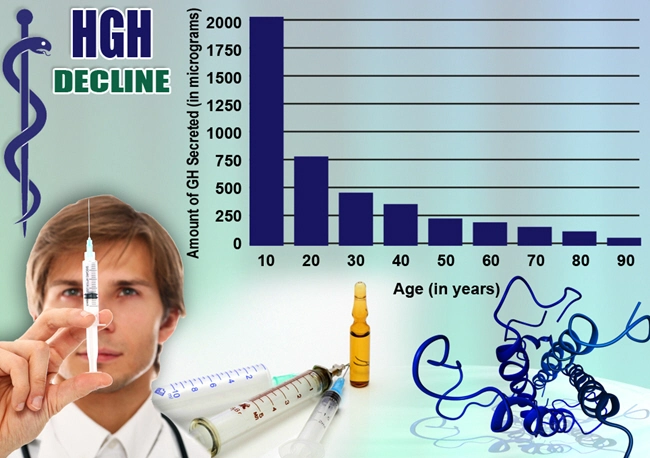
Introduction to Sildenafil
Sildenafil, commonly known by its brand name Viagra, is a medication primarily used to treat erectile dysfunction (ED) and pulmonary arterial hypertension. Understanding the pharmacokinetics of sildenafil is crucial for American males who seek to optimize its therapeutic effects and manage potential side effects effectively.
Absorption of Sildenafil
Sildenafil is rapidly absorbed following oral administration, with peak plasma concentrations achieved within 30 to 120 minutes. The bioavailability of sildenafil is approximately 41% when taken in the fasted state, but this can be reduced when taken with a high-fat meal, which may delay the onset of action. For American males looking to maximize the efficacy of sildenafil, it is advisable to take the medication on an empty stomach or with a light meal.
Distribution of Sildenafil
Once absorbed, sildenafil is widely distributed throughout the body, with a volume of distribution of approximately 105 L. It binds extensively to plasma proteins, primarily albumin, with about 96% of the drug being protein-bound. This high level of protein binding means that only a small fraction of the drug is available to exert its therapeutic effects, which is an important consideration for understanding its pharmacodynamics.
Metabolism of Sildenafil
Sildenafil undergoes extensive hepatic metabolism, primarily by the cytochrome P450 3A4 (CYP3A4) enzyme, with minor contributions from CYP2C9. The primary metabolite, N-desmethylsildenafil, is also pharmacologically active and contributes to the overall efficacy of the drug. For American males, it is essential to be aware of potential drug interactions, as inhibitors of CYP3A4, such as ketoconazole and erythromycin, can increase sildenafil plasma levels, potentially leading to an increased risk of adverse effects.
Elimination of Sildenafil
The elimination half-life of sildenafil is approximately 3 to 5 hours, allowing for a relatively rapid clearance from the body. The drug is primarily excreted as metabolites in the feces (approximately 80%) and to a lesser extent in the urine (approximately 13%). For individuals with hepatic or renal impairment, dosage adjustments may be necessary to prevent accumulation of the drug and its metabolites.
Clinical Implications for American Males
Understanding the pharmacokinetics of sildenafil is vital for American males to ensure safe and effective use of the medication. It is important to adhere to prescribed dosages and to be mindful of potential drug interactions. Additionally, lifestyle factors such as diet and alcohol consumption can influence the absorption and efficacy of sildenafil, so it is advisable to discuss these aspects with a healthcare provider.
Conclusion
Sildenafil remains a cornerstone treatment for erectile dysfunction among American males. By comprehensively understanding its pharmacokinetics, individuals can better manage their treatment regimen, optimize therapeutic outcomes, and minimize the risk of adverse effects. As with any medication, it is crucial to consult with a healthcare professional to tailor the use of sildenafil to one's specific health needs and circumstances.
Contact Us Today For A Free Consultation
Dear Patient,
Once you have completing the above contact form, for security purposes and confirmation, please confirm your information by calling us.
Please call now: 1-800-380-5339.
Welcoming You To Our Clinic, Professor Tom Henderson.

- Optimizing Viagra Efficacy: The Role of Diet in Enhancing or Impeding Its Effects [Last Updated On: February 20th, 2025] [Originally Added On: February 20th, 2025]
- Viagra's Evolution: The Groundbreaking Tale of Sildenafil in Transforming Erectile Dysfunction Therapy [Last Updated On: February 25th, 2025] [Originally Added On: February 25th, 2025]
- The Efficacy of Sildenafil: An Executed Symphony of Chemical Reactions [Last Updated On: February 26th, 2025] [Originally Added On: February 26th, 2025]
- Unraveling the Enigma: Viagra and Generic Sildenafil Dissected [Last Updated On: February 27th, 2025] [Originally Added On: February 27th, 2025]
- Unraveling the Magic Behind Viagra: A Comprehensive Review on Its Mode of Action [Last Updated On: February 28th, 2025] [Originally Added On: February 28th, 2025]
- Transcending Boundaries: The Progressive Transition in Erectile Dysfunction Therapies [Last Updated On: February 28th, 2025] [Originally Added On: February 28th, 2025]
- Deciphering the Biochemical Intricacies of Sildenafil: A Closer Look [Last Updated On: March 1st, 2025] [Originally Added On: March 1st, 2025]
- Sildenafil’s Double-Edged Sword: A Veritable Panacea or Silent Cardiovascular Threat? [Last Updated On: March 2nd, 2025] [Originally Added On: March 2nd, 2025]
- Optimizing Sildenafil Dosage for Effective Erectile Dysfunction Treatment: Guidelines and Considerations [Last Updated On: March 3rd, 2025] [Originally Added On: March 3rd, 2025]
- Comprehensive Guide to Viagra: Uses, Side Effects, and Precautions [Last Updated On: March 4th, 2025] [Originally Added On: March 4th, 2025]
- Managing Viagra Side Effects: Practical Tips for American Men [Last Updated On: March 5th, 2025] [Originally Added On: March 5th, 2025]
- Exploring Viagra's Impact on Men with Hypertension and Cardiovascular Health [Last Updated On: March 6th, 2025] [Originally Added On: March 6th, 2025]
- Age-Related Effects on Viagra's Efficacy: A Comprehensive Guide for American Men's Sexual Health [Last Updated On: March 7th, 2025] [Originally Added On: March 7th, 2025]
- Optimizing Viagra Use for Diabetic Men: Efficacy, Safety, and Dosage Considerations Explored [Last Updated On: March 8th, 2025] [Originally Added On: March 8th, 2025]
- The Psychological Impact of Viagra: Enhancing Self-Esteem and Relationship Satisfaction [Last Updated On: March 9th, 2025] [Originally Added On: March 9th, 2025]
- Comparing Viagra, Cialis, and Levitra: Effective ED Treatments for American Men [Last Updated On: March 10th, 2025] [Originally Added On: March 10th, 2025]
- Revolutionizing ED Care: Exploring Advanced Treatments Beyond Traditional Medications [Last Updated On: March 10th, 2025] [Originally Added On: March 10th, 2025]
- The Evolution of Male Sexual Health: The Impact of Viagra on Culture and Well-being [Last Updated On: March 12th, 2025] [Originally Added On: March 12th, 2025]
- Unveiling the Impact of Viagra: Transformative Stories from American Men [Last Updated On: March 13th, 2025] [Originally Added On: March 13th, 2025]
- Unveiling the Impact of Lifestyle on Viagra's Performance: A Guide for American Males [Last Updated On: March 15th, 2025] [Originally Added On: March 15th, 2025]
- Viagra and Libido: Understanding the Impact and Dispelling Myths [Last Updated On: March 16th, 2025] [Originally Added On: March 16th, 2025]
- Placebo Effect's Role in Enhancing Viagra's Efficacy for Erectile Dysfunction [Last Updated On: March 17th, 2025] [Originally Added On: March 17th, 2025]
- Viagra: Dispelling Myths and Understanding Realities for American Males [Last Updated On: March 18th, 2025] [Originally Added On: March 18th, 2025]
- Viagra's Recreational Use Among American Males: Risks, Rewards, and Implications [Last Updated On: March 18th, 2025] [Originally Added On: March 18th, 2025]
- Viagra's Global Impact and Dominance in American Male Sexual Health Market [Last Updated On: March 18th, 2025] [Originally Added On: March 18th, 2025]
- Viagra and Alcohol: Risks, Interactions, and Safe Usage Guidelines for American Men [Last Updated On: March 19th, 2025] [Originally Added On: March 19th, 2025]
- Sildenafil's Versatile Applications for American Males Beyond Erectile Dysfunction [Last Updated On: March 21st, 2025] [Originally Added On: March 21st, 2025]
- Sildenafil: From Viagra to Vital - Transforming Sexual Health in American Males [Last Updated On: March 21st, 2025] [Originally Added On: March 21st, 2025]
- Global Viagra Pricing: Factors, Comparisons, and Cost-Saving Strategies for American Males [Last Updated On: March 21st, 2025] [Originally Added On: March 21st, 2025]
- Stress-Induced ED in American Men: Viagra's Role and Holistic Management Strategies [Last Updated On: March 21st, 2025] [Originally Added On: March 21st, 2025]
- Viagra's Impact on Mental Health in American Men: Benefits and Challenges [Last Updated On: March 22nd, 2025] [Originally Added On: March 22nd, 2025]
- Generic Sildenafil: Transforming ED Treatment with Affordable, Effective Solutions [Last Updated On: March 22nd, 2025] [Originally Added On: March 22nd, 2025]
- Viagra: Uses, Mechanism, and Critical Drug Interactions for Safe Use [Last Updated On: March 22nd, 2025] [Originally Added On: March 22nd, 2025]
- Navigating Safe Viagra Purchases: Avoiding Counterfeits and Ensuring Efficacy for American Males [Last Updated On: March 22nd, 2025] [Originally Added On: March 22nd, 2025]
- Sildenafil vs. Other Oral ED Medications: A Comprehensive Guide for American Men [Last Updated On: March 22nd, 2025] [Originally Added On: March 22nd, 2025]
- Viagra's Role in Sexual Rehabilitation for American Males Post-Surgery [Last Updated On: March 22nd, 2025] [Originally Added On: March 22nd, 2025]
- Viagra: Safe Usage Guide for Treating Erectile Dysfunction in Men [Last Updated On: March 23rd, 2025] [Originally Added On: March 23rd, 2025]
- Viagra's Role in Treating Pulmonary Hypertension in American Males: Benefits and Management [Last Updated On: March 23rd, 2025] [Originally Added On: March 23rd, 2025]
- Sildenafil's Off-Label Uses: Enhancing American Men's Health Beyond ED Treatment [Last Updated On: March 23rd, 2025] [Originally Added On: March 23rd, 2025]
- Sildenafil: Revolutionizing ED Treatment for American Men - Uses, Benefits, Considerations [Last Updated On: March 23rd, 2025] [Originally Added On: March 23rd, 2025]
- Cultural Attitudes Shaping Viagra Use Among American Men: Stigma, Media, and Economics [Last Updated On: March 23rd, 2025] [Originally Added On: March 23rd, 2025]
- Viagra's Impact on Prostate Health: Benefits and Considerations for American Men [Last Updated On: March 24th, 2025] [Originally Added On: March 24th, 2025]
- Viagra: Boosting Sexual Confidence and Performance in American Men [Last Updated On: March 24th, 2025] [Originally Added On: March 24th, 2025]
- Understanding Sexual Arousal and Viagra's Role in Treating Erectile Dysfunction [Last Updated On: March 24th, 2025] [Originally Added On: March 24th, 2025]
- Viagra's Impact on American Couples: Enhancing Intimacy and Fostering Relationship Growth [Last Updated On: March 24th, 2025] [Originally Added On: March 24th, 2025]
- Viagra's Impact: Transforming ED Treatment and Societal Attitudes in America [Last Updated On: March 24th, 2025] [Originally Added On: March 24th, 2025]
- Viagra: Enhancing Sexual Performance and Quality of Life for American Men [Last Updated On: March 24th, 2025] [Originally Added On: March 24th, 2025]
- Viagra: Revolutionizing ED Treatment and Enhancing Men's Quality of Life [Last Updated On: March 24th, 2025] [Originally Added On: March 24th, 2025]
- Viagra's Recreational Use: Medical, Ethical, and Societal Impacts in America [Last Updated On: March 25th, 2025] [Originally Added On: March 25th, 2025]
- Viagra's Impact on Sexual Medicine: From ED Treatment to Broader Health Insights [Last Updated On: March 25th, 2025] [Originally Added On: March 25th, 2025]
- Navigating Viagra Discussions with Doctors: A Guide for American Men [Last Updated On: March 25th, 2025] [Originally Added On: March 25th, 2025]
- Viagra and Exercise: Synergistic Benefits for Men's Sexual and Cardiovascular Health [Last Updated On: March 25th, 2025] [Originally Added On: March 25th, 2025]
- Viagra: Understanding and Managing Erectile Dysfunction Effectively [Last Updated On: March 25th, 2025] [Originally Added On: March 25th, 2025]
- Smoking's Impact on Viagra Efficacy: Insights for American Males with ED [Last Updated On: March 26th, 2025] [Originally Added On: March 26th, 2025]
- Viagra's Cultural Journey: Iconic Impact on American Pop Culture and Masculinity [Last Updated On: March 26th, 2025] [Originally Added On: March 26th, 2025]
- Viagra's Mechanism: Enhancing Blood Flow for Erectile Dysfunction Treatment [Last Updated On: March 26th, 2025] [Originally Added On: March 26th, 2025]
- Viagra in the U.S.: Regulations, Access, and Legal Landscape Overview [Last Updated On: March 26th, 2025] [Originally Added On: March 26th, 2025]
- Sildenafil Contraindications: Essential Safety Guide for American Males [Last Updated On: March 27th, 2025] [Originally Added On: March 27th, 2025]
- Viagra: Enhancing Sexual Health Safely with Sildenafil [Last Updated On: March 27th, 2025] [Originally Added On: March 27th, 2025]
- Viagra's Impact on Hormonal Balance in American Men: A Comprehensive Review [Last Updated On: March 27th, 2025] [Originally Added On: March 27th, 2025]
- Maximizing Viagra Benefits: Usage, Mechanism, Side Effects, and Safety for ED Treatment [Last Updated On: March 27th, 2025] [Originally Added On: March 27th, 2025]
- Telemedicine Enhances Viagra Access for American Males: Convenience, Privacy, and Safety [Last Updated On: March 27th, 2025] [Originally Added On: March 27th, 2025]
- Viagra Use and Patient Privacy: Navigating HIPAA and Telemedicine for ED Treatment [Last Updated On: March 27th, 2025] [Originally Added On: March 27th, 2025]
- Sildenafil's Impact on Urology: From ED to Broader Applications in American Men [Last Updated On: March 28th, 2025] [Originally Added On: March 28th, 2025]
- Viagra's Economic Impact on U.S. Pharmaceutical Industry and ED Treatment Evolution [Last Updated On: March 29th, 2025] [Originally Added On: March 29th, 2025]
- Generic Sildenafil: Revolutionizing ED Treatment with Affordable Access [Last Updated On: March 29th, 2025] [Originally Added On: March 29th, 2025]
- Ethical Dilemmas in Viagra Advertising: Impact and Oversight [Last Updated On: March 29th, 2025] [Originally Added On: March 29th, 2025]
- Viagra vs. Natural Remedies for ED: Efficacy, Side Effects, and Cost Compared [Last Updated On: March 29th, 2025] [Originally Added On: March 29th, 2025]
- Viagra and Male Fertility: Myths, Facts, and Indirect Benefits Explored [Last Updated On: March 29th, 2025] [Originally Added On: March 29th, 2025]
- Testosterone Levels Enhance Viagra Efficacy in American Men: Optimizing ED Treatment [Last Updated On: March 29th, 2025] [Originally Added On: March 29th, 2025]
- Viagra's Journey: From Hypertension Drug to ED Treatment via FDA Approval [Last Updated On: March 30th, 2025] [Originally Added On: March 30th, 2025]
- Viagra's Impact on Sexual Satisfaction and Relationship Dynamics in American Males [Last Updated On: April 2nd, 2025] [Originally Added On: April 2nd, 2025]
- Long-Term Viagra Use: Benefits, Risks, and Health Impacts for American Males [Last Updated On: April 2nd, 2025] [Originally Added On: April 2nd, 2025]
- Viagra Use in Men with Chronic Illnesses: Safety, Interactions, and Management [Last Updated On: April 4th, 2025] [Originally Added On: April 4th, 2025]
- Sildenafil: Restoring Sexual Function and Enhancing Life Post-Injury for American Men [Last Updated On: April 5th, 2025] [Originally Added On: April 5th, 2025]
- Viagra's Role in Treating Erectile Dysfunction Among Younger Men: A Comprehensive Overview [Last Updated On: April 5th, 2025] [Originally Added On: April 5th, 2025]
- Erectile Dysfunction: Sildenafil vs. Lifestyle Changes - Efficacy and Considerations for American Males [Last Updated On: April 6th, 2025] [Originally Added On: April 6th, 2025]
- Viagra Interactions: Critical Considerations for American Males with Multiple Medications [Last Updated On: April 7th, 2025] [Originally Added On: April 7th, 2025]
- Viagra vs. Other ED Treatments: Efficacy, Side Effects, and Patient Satisfaction Compared [Last Updated On: April 8th, 2025] [Originally Added On: April 8th, 2025]









